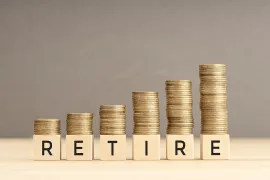The core of their retirement strategy will depend on their work pensions, Moran notes. At age 65, Marie can expect a fully indexed government pension of $42,660 per year, while Stephen will have $37,000 per year with no indexation. They have bridges of $12,168 and $7,000, respectively, to age 65 when the bridges drop away and are replaced by CPP and OAS. They have RRSPs: Stephen $220,000 and Marie $45,630. Marie also has $12,000 in her TFSA. Finally, they have $20,000 in cryptocurrency.
Paying down debt
They have debts that must be paid, best before retirement. There is a $185,000 mortgage on their house with a current 3.2-per-cent interest rate that is likely to rise before it is paid off in 13 years and a $13,000 car loan with a 4.7-per-cent rate of interest. For now, the house mortgage payment is $1,452 per month, the car loan $800 per month.They currently allocate $8,495 per month, but their costs in retirement should drop when their car loan and mortgage payments as well as $1,100 RRSP contributions and a $161 term-life insurance payment will end. That will cut a total of $3,513 out of spending, leaving $4,982 per month or $59,784 per year in estimated retirement spending.
To generate the approximately $60,000 in post-tax retirement income they will need about $70,000 before income splits, various credits and tax. The mortgage, due in 13 years, should be adjusted so that the debt is paid by their retirement. Acceleration will raise the present $1,452 monthly payment to $2,537.
One solution is to convert some assets to cash. If they sell their $20,000 bitcoin hoard and pay off the $13,000 automobile loan, they will have $7,000 left over. They can then cash out the $12,000 TFSA and apply the $19,000 total to the mortgage, reducing the balance from $185,000 to $166,000. That will cut the higher monthly amount due by about $340 per month to $2,197. They can cover the $745 higher net payments by making a $300 monthly cut in $1,150 present food and restaurant spending and $445 reduction in $825 gym, entertainment and travel spending. That’s significant, but it would be temporary.
Pensions
Both will get $13,539 in Canada Pension Plan benefits at 65, close to the maximum of $15,043. They will both also receive full Old Age Security at 65, currently $8,000 per year. That’s a total of $43,078 per year.Then come the defined-benefit pensions. Marie’s is 100 per cent indexed to inflation. Stephen’s is not indexed. Stephen could commute the base for his pension, about $900,000, but he would have to pay an estimated 44-per-cent tax on the $300,000 surge of income exposed to full taxation. That works out to a bill of $132,000. His $145,000 of unused RRSP room could help defer tax. The process works as intended only if Stephen can get a superior return on what is left after tax.
Their RRSP savings, $45,630 for Marie and $220,000 for Stephen, are more than adequate for their needs given their robust employment pensions, CPP and OAS. If they stop contributions, then their $265,630 combined balance growing at three per cent after inflation for the six years to their retirement will become $317,180 when Stephen is ready to retire. If this sum continues to grow at three per cent over inflation and is spent in the following 32 years to Marie’s age 90, it will provide $15,103 per year to exhaustion.
Future income
From Stephen’s retirement to Marie’s age 65, when the pension bridges end and CPP and OAS start, their income, with the assumption that Stephen does not cash in his commuted pension value, would be made up of $42,660 and $37,000 base pensions, corresponding bridges of $12,168 and $7,000, and $15,103 RRSP income for a total of $113,931.With splits of eligible income and 20 per cent average tax, they would have $91,145 per year or $7,595 per month to spend, well above their $70,000 target and the $60,000 they would need to cover reduced expenses.
When both are 65, they will have base pensions of $42,660 and $37,000, CPP benefits of $13,539 for each, two OAS benefits of $8,000 each and $15,103 combined RRSP benefits. That’s a total of $137,841 before tax. After splits of eligible income and 21-per-cent average tax, they would have $9,075 per month to spend.
The question of mortality has to be raised. When either partner predeceases the other, even with pension splits and 50-per-cent survivor benefits for their work pensions, there will be a loss of one OAS benefit and virtually all of one CPP benefit. That is a total loss of $21,539, plus the fractional loss of the decedent’s pension — about $20,000, depending on who goes first. Without income splitting, the survivor will pay more tax.
They could hedge this cost and risk by commuting Stephen’s pension, paying the high initial tax, then investing the remainder in a combination of RRSP and LIRA. Commutation and a good investment return would offset the inevitable decline in purchasing power of Stephen’s non-indexed pension, but with a hefty upfront cost, as noted. However, the transfer and following RRSP investments could fund additional annual payouts of as much as $35,475 to Marie’s age 90 assuming a three per cent return after inflation. Commutation comes with a high cost and adds investment risk but offers potential inflation protection in future. Stephen should review commutation with an accountant or actuary.
Retirement stars: 4 **** out of 5
Financial Post
( C) 2022 The Financial Post, Used by Permission


































